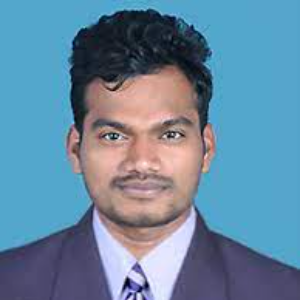Title : 1D/0D Heterojunction nanohybrids extremely excitons transfer for superior photocatalytic hydrogen evolution and NO2 gas detection at ambient temperature
Abstract:
Photocatalytic hydrogen generation and room temperature gas sensors are promising to minimize environmental pollution and carbon-based gas emissions [1]. In this work, TiO2 nanoparticles grown onto CdS nanorods were designed via two-stage facile synthesis to obtain 1D/0D unique heterostructures. Subsequently, titanate nanoparticles loading onto CdS surfaces, with an optimized titanate concentration (20 mM) showed noteworthy superior photocatalytic hydrogen generation (21.4 mmol/ h/gcat) under 1.5G air mass solar light irradiation. The recyclability of the optimized nanohybrid for six cycles, each cycle has 4 h, indicating that the prepared hetero-structured photocatalyst is an excellent stable material for a prolonged lifetime energy application. In addition, the optimized active CRT-2 was used for an effective room temperature NO2 gas detection. The CRT-2 sensor showed a higher response (69.16 %) towards NO2 gas (100 ppm) at room temperature (RT) with the lowest detection limit of ~118 ppb when compared to its pristine counterparts. The CRT-2 sensor showed a short response/recovery time, good cycling stability, and excellent selectivity to NO2 gas at RT. The NO2 gas sensing performance of CRT-2 sensor was further boosted using the UV light (365 nm) activation energy. As expected, under the UV light, the sensor exhibited a remarkable gas sensing response with a fast response/recovery and a significant selectivity towards NO2 gas. Furthermore, a long-term stability test under dark and UV light towards 100 ppm of NO2 gas was performed at RT and the results showed a significant response continuously for up to 6 weeks without any major loss in the sensor response, signifying that the developed sensor is more reliable for stable gas sensing applications. Thus, excellent photocatalytic and gas sensing performances of CRT-2 material can be ascribed to its high surface area, morphology, synergistic effect, enhanced charge generation, and separation. The constructive 1D/0D CdS@TiO2 heterojunction material is highly efficient for multi-applications such as energy generation, environmental monitoring, and safety at RT.
Keywords: Photocatalyst, heterostructures, hydrogen, sensors, stability, and environmental pollution.
Audience take-away:
- By presentation, the audience will learn how to synthesize monodispersed nanospheres followed by facile methods (Review any current data and analytics, look to previous successes among your audience, and Create buyer personas, comments, and engagements. Experiment with content and updates to your products and services.)
- Yes, it is research peoples have very useful for expanding their research, especially energy application
- Creative problem-solving is an approach that identifies unique solutions to issues through a process of problem identification and resolution planning. It goes beyond conventional approaches to find solutions to workflow problems, product innovation, or brand positioning. Developing the skill of creative problem-solving requires constant improvement to encourage an environment of consistent innovation.
- Creative problem-solving is considered a soft skill, or personal strength. In an interview, you may be asked to give examples of times you’ve demonstrated this ability. Employers ask this question to understand your thought process, learn how you address challenging situations and clarify how you can bring value to their organization.
- Our designing morphology is a new ideal strategy for enhancing the suppression of photo corrosion, as well as superior photocatalytic overall water splitting as well as toxic gas detection application.


